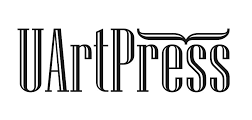Gender és nyelvi viselkedés az új médiában
Cuvinte cheie:
linguistic behaviourRezumat
Gender and Linguistic Behaviour in the New Media
The issue of gender roles is a major topic in Hungarian traditional and online media, especially due to the fact that it was a leading subject in public life over the course of 2015. Several well-known personalities (politicians, and a defining figure of the cultural life) made statements and expressed their opinions about women’s place in society and family, triggering extreme reactions. Facebook was one of the spaces where the debate was the most aggressive, where people shared their views with their names and faces, without being moderated or censored. Our aim is to analyze the Facebook pages of the most followed Hungarian online press products from a gender linguistic point of view, more exactly the comments under the posts about the topic in question. Particular emphasis is placed on the linguistic and non-linguistic strategies that lead to constructing the classical and non-classical gender roles and stereotypes in Facebook communication.
Referințe
BODÓ, Csanád. 2012. A dzsender-paradoxon és magyar szociolingvisztikai recepciója. TNTeF. 2/2. 93–112.
BUCHOLTZ, Mary. 2003. Theories of Discourse and Theories of Gender: Discourse Analysis in Language and Gender Studies, in Holmes, J. and Meyerhoff M. (szerk.): The Handbook of Language and Gender. Oxford: Blackwell, 43–68.
BUTLER, Judith. 1990. Gender Trouble: Feminism and the Subversion of Identity. Routledge.
BUTLER, Judith. 1993. Bodies that Matter: On the Discoursive Limits of “Sex”. London–New York: Routledge.
CAMERON, Deborah. 1995. Verbal Hygiene. London–New York: Routledge.
CAMERON, Deborah. 2003. Gender and Language Ideologies, in Holmes, J. and Meyerhoff M. (szerk.): The Handbook of Language and Gender. Oxford: Blackwell, 447–467.
COATES, Jennifer. 2004. Women, Men and Language: a Sociolinguistic Account of Gender Differences in language. 3. kiadás. Harlow: Longman.
HOLBOROW, Marnie. 1999. The Politics of English: A Marxist View of Language. London: Sage.
HOLMES, Janet. and MEYERHOFF, Miriam. 2003. The Handbook of Language and Gender. Oxford: Blackwell.
HUSZÁR, Ágnes. 2009. Női nyelv? Férfi nyelv? Gendernyelvészet Magyarországon. Magyar Tudomány. 176/3. 276–285.
JAMES, Deborah. – DRAKICH, Janice. 1993. Understanding Gender Differences in Amount of Talk: a Critical Review of Research, in Tannen, D. (ed.) Gender and Conversational Interaction. New York: Oxford University Press, 281–312.
LAKOFF, Robin. 1975. Language and Woman’s Place. New York: Harper & Row.
MCELHINNY, Bonnie. 2003. Theorizing Gender in Sociolinguistics and Linguistic Anthropology, in Holmes, J. and Meyerhoff M. (szerk.): The Handbook of Language and Gender. Oxford: Blackwell, 21–42.
TANNEN, Deborah. 1990. You Just don’t Understand: Women and Men in Conversation. New York: William Morrow.
WEST, Candace, ZIMMERMAN, ; Don. H. 1987. Doing Gender. Gender & Society, 1(2), 125–151.
WARDHAUGH, Ronald. 2006. An Introduction to Sociolinguistics. Oxford: Blackwell.
Descărcări
Publicat
Cum cităm
Număr
Secțiune
Licență
CC-BY permite reproducerea, distribuirea, arhivarea și citarea sa cu condiția să menționați autorii. Este obligatorie referința completă către articol care se găsește în rubrica Exemple de citare de pe această pagină. Dacă e posibil, vă rugăm adăugați și link-ul către acest site. Drepturile de copyright aparțin autorilor.




